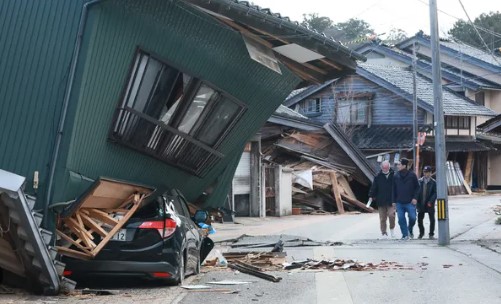Table of Contents
Earthquakes are among the most unpredictable natural disasters, capable of causing widespread devastation and posing significant risks to human life and infrastructure. While we cannot prevent earthquakes, proactive preparation and planning are essential to minimize their impact and ensure the safety and resilience of individuals, families, and communities. In this comprehensive guide, we will explore a range of strategies to enhance earthquake preparedness, covering essential steps to safeguard your home, family, and community against the potential hazards of seismic activity.
1. Understand the Risk:
Before taking any preparatory measures, it is crucial to understand the earthquake risk specific to your geographic location. Research historical seismic activity and consult with local authorities to assess the likelihood and potential impact of earthquakes in your area. Understanding the risk allows you to tailor your preparedness efforts effectively.
2. Create an Emergency Plan:
Developing a comprehensive emergency plan is the foundation of earthquake preparedness. Your plan should outline evacuation routes, designated meeting points, and communication strategies for reconnecting with family members. Assign roles and responsibilities to each household member, ensuring everyone knows what to do in the event of an earthquake.
3. Assemble an Emergency Kit:
Prepare an emergency kit containing essential supplies to sustain your family for at least 72 hours following an earthquake. Include items such as water, non-perishable food, medications, first aid supplies, flashlights, batteries, a multi-tool, blankets, and personal hygiene products. Customize your kit to accommodate the specific needs of family members, including infants, elderly individuals, and pets.
4. Secure Your Home and Property:
Identify and address potential hazards within your home that could pose risks during an earthquake. Secure heavy furniture, appliances, and fixtures to walls or floors to prevent tipping or displacement. Install safety latches on cabinets and shelves to prevent contents from falling. Consider retrofitting older structures to improve their seismic resilience, consulting with a structural engineer for guidance.
5. Conduct Safety Drills:
Regularly practice earthquake drills with your family to ensure everyone knows how to respond quickly and safely in an emergency. Practice “Drop, Cover, and Hold On” techniques to protect yourself from falling debris. Familiarize yourself with evacuation routes from your home or workplace and alternative means of communication in case of power outages.
6. Stay Informed and Educated:
Stay informed about earthquake risks and preparedness measures by monitoring local news, official alerts, and updates from relevant authorities. Attend community workshops, training sessions, and preparedness events to enhance your knowledge and skills. Educate yourself and your family members about earthquake safety and response procedures.
7. Support Community Resilience:
Engage with your community to promote earthquake preparedness and resilience-building initiatives. Participate in neighborhood preparedness programs, volunteer organizations, and community emergency response teams. Collaborate with local authorities, schools, businesses, and nonprofits to develop and implement disaster preparedness plans.
8. Review and Update Regularly:
Regularly review and update your earthquake preparedness plans, emergency kits, and evacuation procedures to ensure they remain current and effective. Reassess potential hazards in your home and property and make necessary adjustments to mitigate risks. Conduct periodic drills and training exercises to reinforce emergency response skills and identify areas for improvement.
9. Consider Insurance and Financial Preparedness:
Review your insurance policies to ensure adequate coverage for earthquake-related damages and losses. Consider purchasing earthquake insurance if you live in a high-risk area. Additionally, establish an emergency fund to cover unexpected expenses associated with earthquake recovery, such as temporary housing, repairs, and replacement of essential belongings.
10. Practice Self-Care and Emotional Resilience:
Prioritize self-care and emotional well-being during and after an earthquake. Practice stress-reduction techniques, such as deep breathing, meditation, and physical exercise, to cope with anxiety and uncertainty. Seek support from family, friends, and mental health professionals if needed, and encourage open communication within your community to foster mutual support and resilience.
Conclusion: Earthquakes are inevitable natural phenomena that require proactive preparation and collective action to mitigate their impact and promote community resilience. By implementing the comprehensive strategies outlined in this guide, you can enhance your earthquake preparedness and contribute to the safety, security, and well-being of yourself, your family, and your community. Remember, preparedness saves lives, and investing time and effort in preparedness now can make a significant difference in the event of an earthquake. Stay informed, stay prepared, and stay resilient.
4.8 magnitude earthquake rattles NYC, New Jersey: Preparation and Safety Measures


